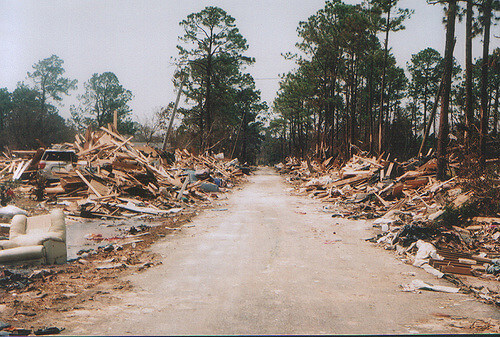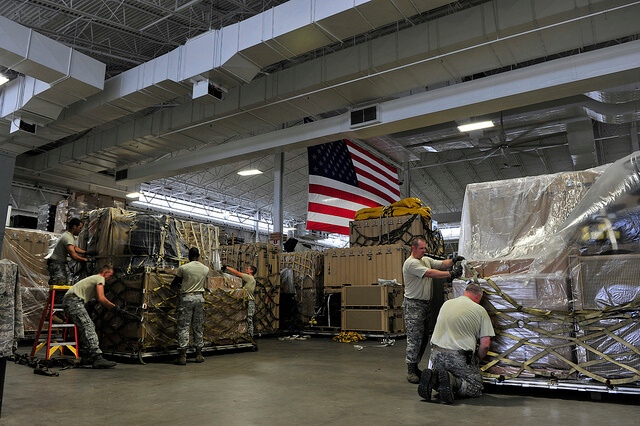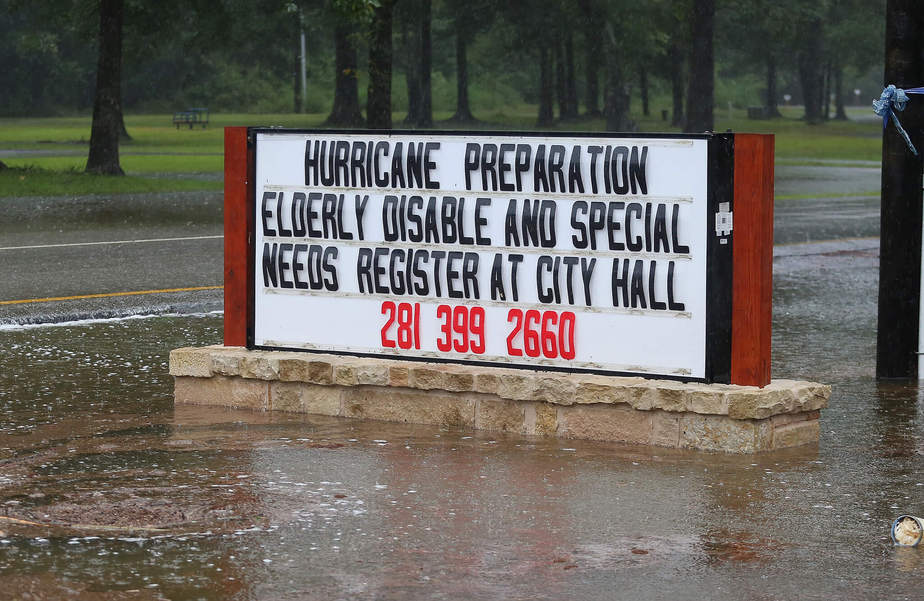Written by Stuti Pachisia
On August 17th, the National Hurricane Center in Miami issued a warning against a small but developing tropical cyclone. Within a week, a massive hurricane had formed southeast of Port O’Connor. By midnight, the hurricane was rapidly advancing towards Texas, with sustained winds of 160 km/h. This was only the beginning of Hurricane Harvey, which became a devastating Category 4 Hurricane at its worst, sustaining winds of 215 km/h. Even as the cyclone ebbed, it left behind a massive flood, caused by a downpour of 51 inches of rainfall over Texas and Louisiana.

Texas National Guard aiding citizens during Hurricane Harvey, Image/CC
Almost simultaneously, on August 30, 2017, another hurricane began developing as a low-pressure system in the eastern Atlantic. In another five days, hurricane warnings were issued for wide-ranging impact on Puerto Rico and the Caribbean islands. The next day, Hurricane Irma, an even more devastating Category 5 hurricane ravaged Florida, Cuba and Cape Verde. At its peak, Irma maintained winds of nearly 300 km/h for a total of 37 hours: the longest record for a storm.
These hurricanes have caused an estimated damage of USD 190 billion and USD 50 billion respectively, with about 81 casualties. Unfortunately, this is only the tip of the iceberg.
Hurricanes Harvey and Irma originate from a common phenomenon: the Atlantic hurricane season
This is an annual period that lasts officially from 1 June to 30 November. Although cyclones and hurricanes exist outside of this period, these dates were selected so as to encompass over 97% of tropical activity. Even within this period, massive cyclonic activity lasts from August through October. Even major hurricanes, like Katrina and Ike, struck the USA during the active Atlantic hurricane seasons of 2005 and 2008.
While the season does imply the building of several tropical cyclones, earlier this year, the National Oceanic and Atmospheric Administration (NOAA) announced “an above-normal hurricane season” that “could be extremely active”. We are halfway through the season, and the damage caused by Harvey ─ with Irma, in quick succession ─ is staggering. As Paul Walsh, a business meteorologist for IBM, told CNBC, the combined damage caused by Harvey and Irma is equivalent to “half the total cost of damage caused by all hurricanes over the past 50 years.”
While not the immediate cause, the immensity of the hurricanes can be largely attributed to climate change. Hurricanes strengthen in warm water, and oceans have warmed on an average 1 to 3 degrees in the past century. Sea levels have also risen by about 7 inches, which majorly magnifies flood damage.
Andrew King notes that “It’s clear that climate has worsened the impacts of Atlantic hurricanes and will continue to do so”; he adds that while climate change is worsening, “improved forecasting provides a glimmer of hope that the death tolls from future events can be reduced, even as the economic impacts increase.”
Ostensibly, this implies that the loss of human life will be mitigated, even if economic damage continues to be on the rise. But ensuring this approach hinges on structural and policy responses. So, even as we plan for the future, it is important to understand previous policy measures and their implementation during hurricanes of the past. In this endeavour, we examine the functioning of the mitigation policies that came into place after the ravages caused by two other massive hurricanes in the USA: Hurricane Katrina (2005) and Hurricane Ike (2008).
Hurricane Katrina
Hurricane Katrina was a massive cyclone spread over 90,000 square miles in 2005. Over 1,500 people were killed, over 1 million were displaced and over $81 billion was estimated as damages from Florida, Louisiana, Mississippi, Alabama and Georgia.

The aftermath of Hurricane Katrina, Image/CC
As with most natural calamities, the damage caused by Katrina was amplified by the failure of inhabitants to respond adequately to preemptive warnings and the inadequacy of immediate support. As Moynihan notes, “Despite the heightened attention to homeland security, the response to Katrina was a failure. The world watched as government responders seemed unable to offer basic protection from the ravages of nature.”
Moynihan finds that it was the private sector which responded with more efficiency than the government, and that “companies like Wal-Mart, Home Depot, and State Farm Insurance made preparations for the impending disaster weeks before Katrina hit”. They were willing to and capable of bringing resources to alleviate damage before government agencies could manage to do so.
Despite instances of poor immediate response, the long-term disaster management has proved beneficial
The Post-Katrina Emergency Management Reform Act (PKEMRA) of 2006 clearly guided the Federal Emergency Management Agency (FEMA) in its mission and priorities. It provided the legislative authorities needed to better partner with state, local, tribal, and territorial governments before, during, and after disasters.
Insofar, according to the official FEMA site, the progress in post-hurricane recovery over the past decade has been significant. FEMA supports communities and families who were ravaged by hurricane Katrina till date. They work side-by-side with State, local and tribal partners to rebuild livelihoods and have provided $6.7 billion to more than one million individuals and households in realising this goal. FEMA has also provided more than $15 billion to Louisiana, Mississippi, Alabama, and Florida for thousands of public works projects, including the repair and rebuilding of schools, hospitals, roads, police and fire stations, and historic buildings. Three years on, however, another massive hurricane hit the USA.
Hurricane Ike
Like Irma, Hurricane Ike was a long-lived and major Cape Verde hurricane that caused extensive damage and many deaths across portions of the Caribbean and along the coasts of Texas and Louisiana. It became a Category 4 hurricane on 3rd September 2008, causing a total loss of $29 billion and over 500,000 gallons of spilt crude oil. Subsequently, massive policy reformation to for rehabilitation and prevention came in place.
The FEMA obligated more than $1.3 billion in Public Assistance funding to help Texas students get back into their schools, restore the availability of healthcare in affected areas and repair public infrastructure damaged by the hurricane.

Preparing emergency equipment for immediate response to Hurricane Irene at CRW’s Global Reach Deployment Centre, Image/CC
Additionally, it set aside $355 million for the Hazard Mitigation Grant Program (HMGP), which intended to reduce the loss of life and property caused by natural disasters.
Still, a major policy failure was the non-construction of the Ike Dike. Following Hurricane Ike, Bill Merell conceived the idea of a Coastal Spine ─ termed the Ike Dike. It is a coastal barrier conceived to keep water from entering the Galveston Bay in Texas. Nearly a decade on, the Ike Dike is still just a concept, largely because of its massive costs. But in the wake of Hurricane Harvey, it has become more important than ever.
As The Beaumont Enterprise notes, “The dike would cost $15 billion or more, and it was always doubtful that Congress would find that money in its deficit-riddled finances. The federal aid for Harvey will likely exceed that sum for Texas – as it should. Unless the House and Senate want to simply to let even more red ink gush from Washington, some priorities should be established.”
Featured image from Carlson/ CC BY 2.0






